Dear Reader, in this age of AI created content, please support with your goodwill someone who works harder to provide the human-made. Sign up in the righthand column or bottom of this page. You will receive my hand illustrated monthly newsletter RESTORE NATURE and access to the biodiversity garden design course as I write...and nothing else, I respect your time.
A description of local landscaping in the lovely Buitenverwachting gardens, and green inspirations
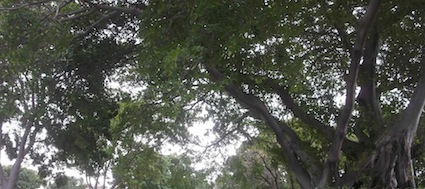
Before we went in to the wine tasting, I had to sample the local landscaping and have a look at the gardens.
The colour was good, they gardens were invitingly and sumptuously green. The space between the manor house and the restaurant is dominated by a large, well tended lawn, and the overall feel of the place is created by many enormous old trees. The canary island pine in the centre of the lawn is the biggest I’ve ever come across and can probably be seen for miles.
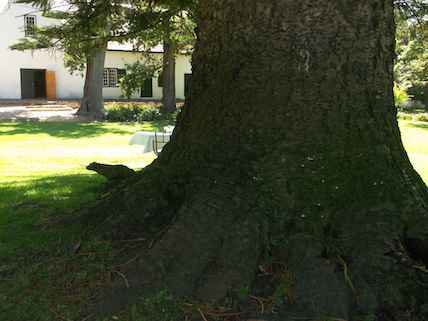
This garden is a tour de force in white and green. The old perennial plantings and trees are stupendous, and carry the garden, as its backbone, with their diverse forms of visual interest.
The crystal white of the buildings with their dark green shutters peep through curtains of foliage. The scale is grand, the plants massive, like an old arboretum or botanical garden. Despite the signs of care and excellent maintenance and garden health, it is in its classic way, a frugal, conserving form of gardening with perennials, that comes across very well.
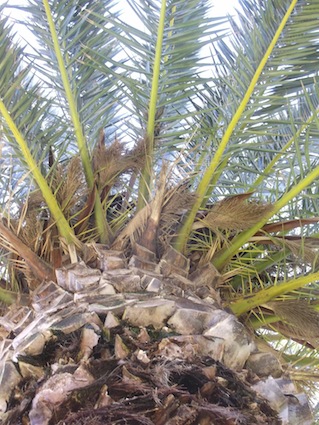
Many of the plantings must be historical monuments in their own right, and this is a lovely piece of local landscaping where the designer has not interfered too much with history, but rather respected it and preserved its best features.
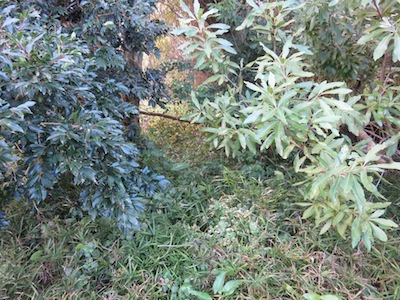
I believe this is a popular venue for weddings and white does look very photogenic against all this green, as can be seen in the way the crisp white tablecloths look so good in the photograph of the outdoor tables.
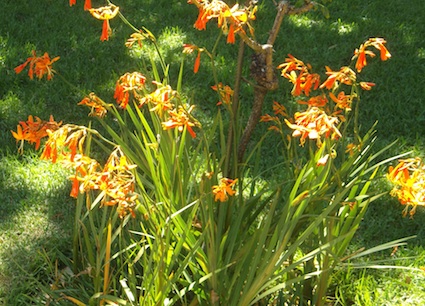
The finishing touches were perfect. Some bright indigenous bulbs, commonly known as afrikanertjies were flowering near the coffee shop. Catching the sunshine they brought a glowing touch of the truly local to this local landscaping marvel. Much later I found the loveliest table of them all, beneath the trees in a secret spot, though perhaps after the wine tasting it just appeared lovelier than reality.
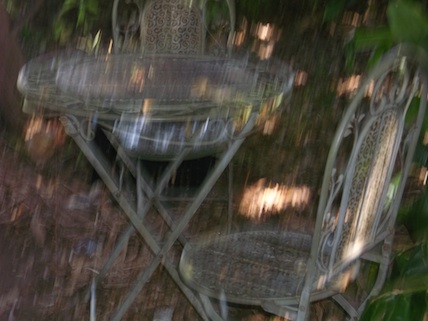
some green ideas for the local landscaping
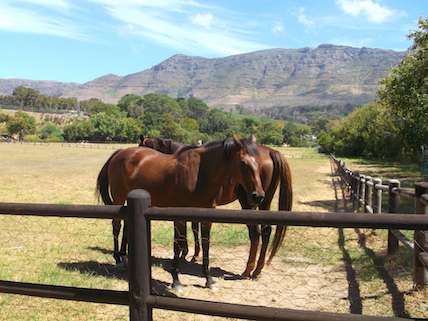
I’m sure the stable for these horses provides good garden manure. Mixed with straw, horse manure is a great food for the worms in a vermi-compost bin, and the vegetable waste from cooking provides even more varied meals for worms, which multiply and get fat. The vermicast is a perfect food for gardens, lawns, vegetables and fruit trees.
beauty, danger, and ancient marks
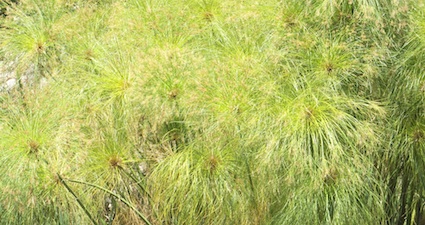
On an approach road to the farm we passed a river planted with willows and thick with papyrus grass which has a beautiful fine texture in sunshine and shade, but this gorgeous plant featuring in tomb paintings thousands of years old is not as green as it appears.
Cyperus papyrus, summary of invasiveness
This is a fast growing perennial sedge that is native to the Nile valley. In other areas it is regarded as a “serious invasive threat to native species and ecosystems, and can also impede the flow of waterways” where it threatens and dominates the local water vegetation. Many people plant it in their gardens as it is exceptionally large and dramatic and beautiful, and what landscapers call a sculptural plant.
I hope local landscaping professionals and gardeners are aware of the dangers to our water systems. The up side, which may provide solutions, is that it has been used for millennia along the Nile for animal feed, herbal medicines, cordage, boats, matting, mattresses, cushions, roofing, flooring, and most famously for paper, including that used in ancient Egypt. Recently it has been used as a biofuel, as a biofilter for polluted water, and as a carbon sink.
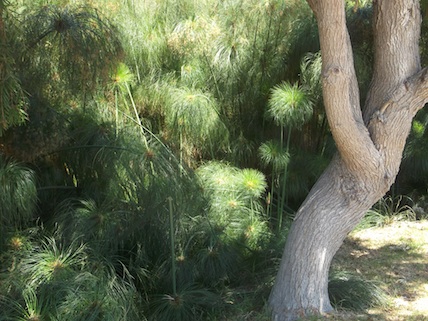
I do not know how aware the people round about on the neighbouring wine estates are of this problem, but as the area is on the headwaters of a river the Cyperus papyrus could present a danger to property down stream, and even to the sensitive Coastal Wetlands and Vleis, depending on where that river empties. I suggest that if they have not done so, a green project could be started. Kirstenbosch could supply substitute indigenous Cyperaceae, reeds or riverine Restios, which will do the work of bio filtration better. The indigenous river plants must have been growing in that river before Dutch settlement, so it would add a dimension to the historical integrity of place. Perhaps the project could create green jobs, during the rooting out of the papyrus and recycling it and replanting with indigenous river plants. You can see above the many uses papyrus has been put to in history. I believe there is a maker of handmade craft paper at Montebello in Newlands who uses bulrushes and may welcome the chance to make paper with real papyrus and even will harvest it himself. There may be a producer of composite flooring materials who could buy it up, they make composite floors of bamboo. At the moment the thatch roofs are being restored at the wine farm. Perhaps the thatcher could have used papyrus instead of indigenous Restio thatching, or he could have taken the papyrus for other projects like Lapas. If the papyrus were to be used to make paper, these papers could be sold to a craft paper distributor, or used for green weddings which are an absolute rage all over the prosperous world, as internet market research will tell you, and there is the add-on of the romantic connection with ancient Egypt. I apologize for my flights of fancy if this papyrus bed is already part of such a project or has presented the people of the area with a difficult eradication problem I don’t know about, and I would love to know more. Information on how to get rid of it, have it recycled, or even make money out of its removal could be the result of onsite research and experimentation, and would be a boon to local landscaping and the green economy, as well as exportable know how. There are sometimes solutions to these kind of problems which don’t have to break the bank, and add so much beauty, the beauty beneath the surface, to a place.
------
home page connecting to green issues
------
gardens that are ideologically green too
------
Restore Nature Newsletter
I've been writing for four years now and I would love to hear from you
Please let me know if you have any questions, comments or stories to share on gardening, permaculture, regenerative agriculture, food forests, natural gardening, do nothing gardening, observations about pests and diseases, foraging, dealing with and using weeds constructively, composting and going offgrid.
SEARCH
Order the Kindle E-book for the SPECIAL PRICE of only
Prices valid till 30.09.2023
Recent Articles
-
Geography Research Task
Jan 31, 25 11:37 PM
To whom it may concern My name is Tanyaradzwa Madziwa and I am a matric student at Springfield Convent School. As part of our geography syllabus for this -
Eco Long Drop Pit Latrines Uganda
Nov 29, 24 02:45 AM
Good evening from the UK. My name is Murray Kirkham and I am the chairman of the International and foundation committee of my local Lindum Lincoln Rotary -
Landscape Architect
Oct 01, 24 10:42 AM
I so appreciate your informative description! Your experimentation and curiosity with the seeds, germination, and rearing of the maggot are exciting to
"How to start a profitable worm business on a shoestring budget
Order a printed copy from "Amazon" at the SPECIAL PRICE of only
or a digital version from the "Kindle" store at the SPECIAL PRICE of only
Prices valid till 30.09.2023





